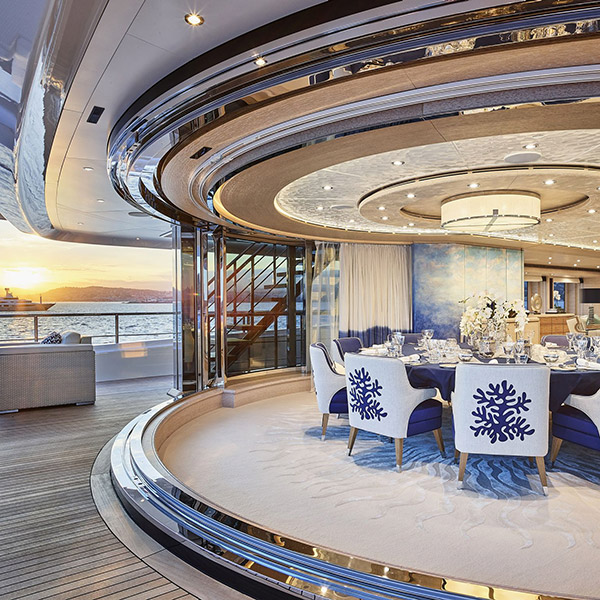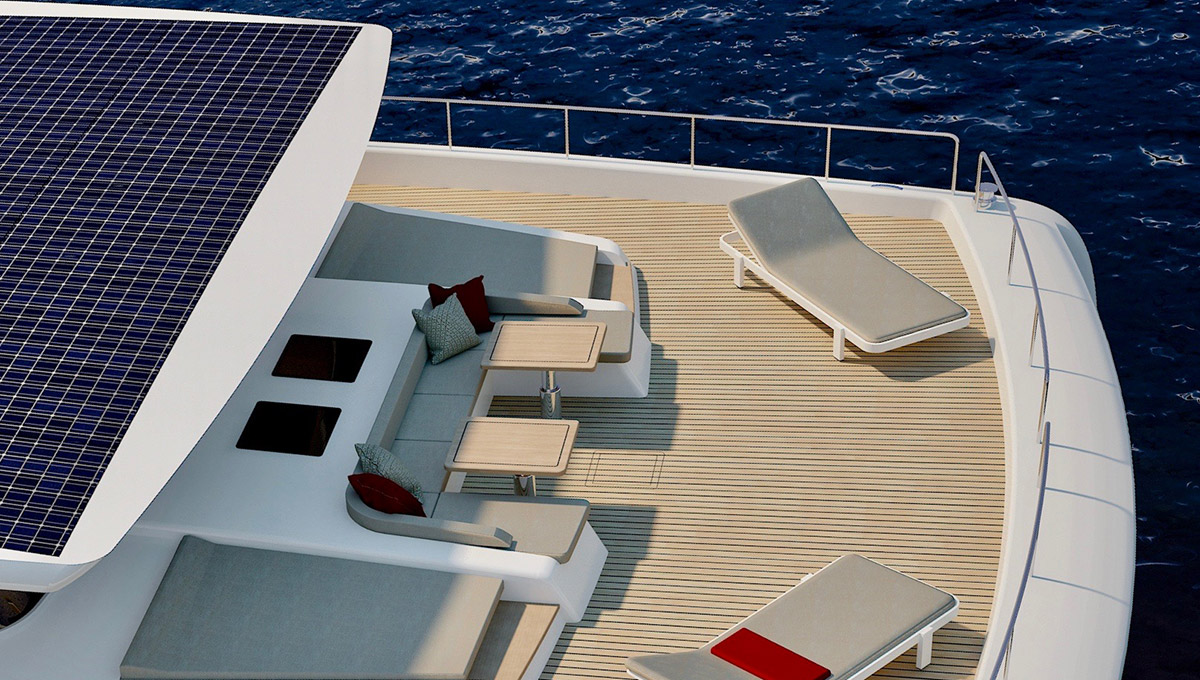
SILENT80

SILENT80
The power of the sun
Could solar power be a game changer for sustainable yachting?
There are moments in life that carry such weighted significance, we can’t help but remember them, even years on. For the world of cars, it was the arrival of Tesla. For the world of yachting, could solar power be that viable game changer?
“When Tesla came up with electric cars that worked, that was a real turning point,” says Michael Köhler, founder and CEO of Austrian boat builder Silent Yachts. A Tesla owner himself, Köhler’s range of oceangoing solar-electric production catamarans use the same Li-ion batteries as found in the famed electric cars. Aside from enjoying a smooth and silent commute to work, his first-hand experience of driving the vehicle has also informed the development of his long-range yachts.
“It would be so simple for Tesla to install a tiny 10Kw generator that would enable the car to be completely independent from charging stations,” explains the entrepreneur. “That is the reason why we build our yachts with the inclusion of a generator, and why our system works without limitations.”
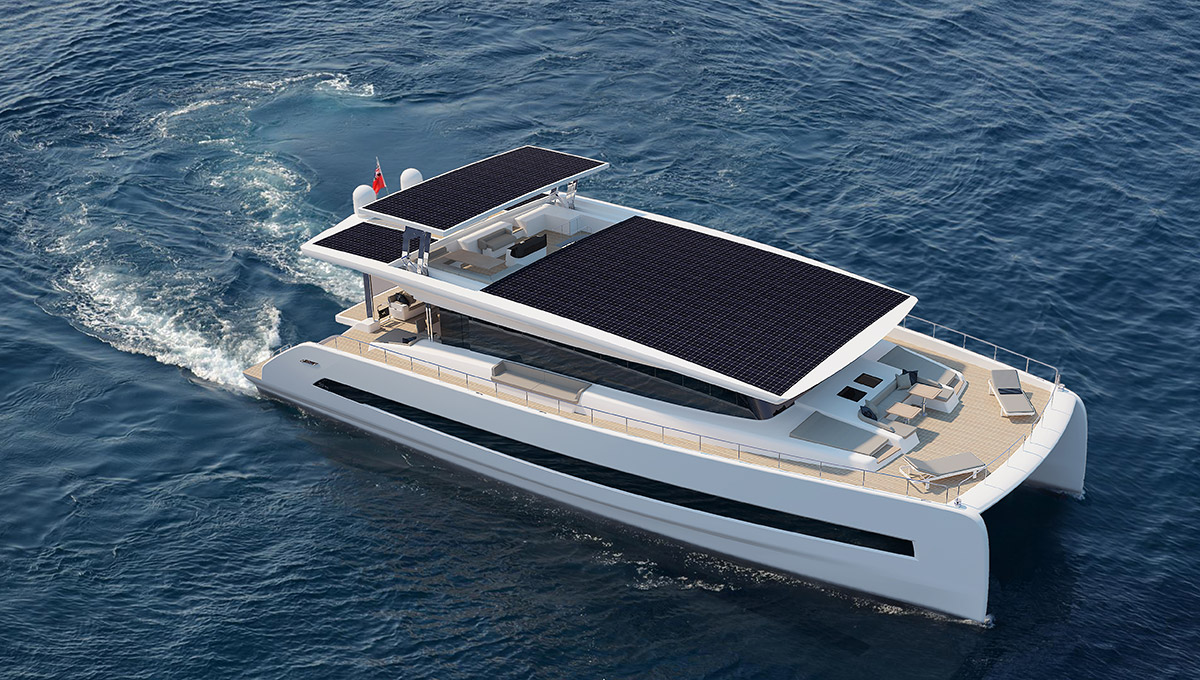
SILENT80

SILENT80
Köhler confirms six sales of their Silent 80, seven of their Silent 55 and another six of the Silent 60. The key selling point, he says, is undoubtedly the yachts’ self-sufficiency. “It’s the simple yet alluring idea that you can leave harbour with virtually empty fuel tanks, and slowly circumnavigate the world without stopping,” he says.
In reality, most owners spend no longer than a few weeks on board their yachts, with multiple shore excursions in between, but to be able to build an itinerary that isn’t dictated by fuelling stations is novel. So, too, is the prospect of silent cruising all night. And with a 15-kVA inverter providing power for all household appliances, the electrical system even extends to a powered aft swim platform and a 1,500-watt electric windlass. If owners are happy to cruise at a leisurely four knots in calm seas, then continuous non-stop sailing is achievable without the batteries ever running out.
Of course, the invention of solar power is itself not new, and Dutch design studio Vripack has been dabbling in it since 2004. But it was Vripack’s ultra-light foiling V20, the world’s first one-design solar power race boat built to compete in the Monaco Solar1 race in 2014, that has since made owners sit up and take notice.
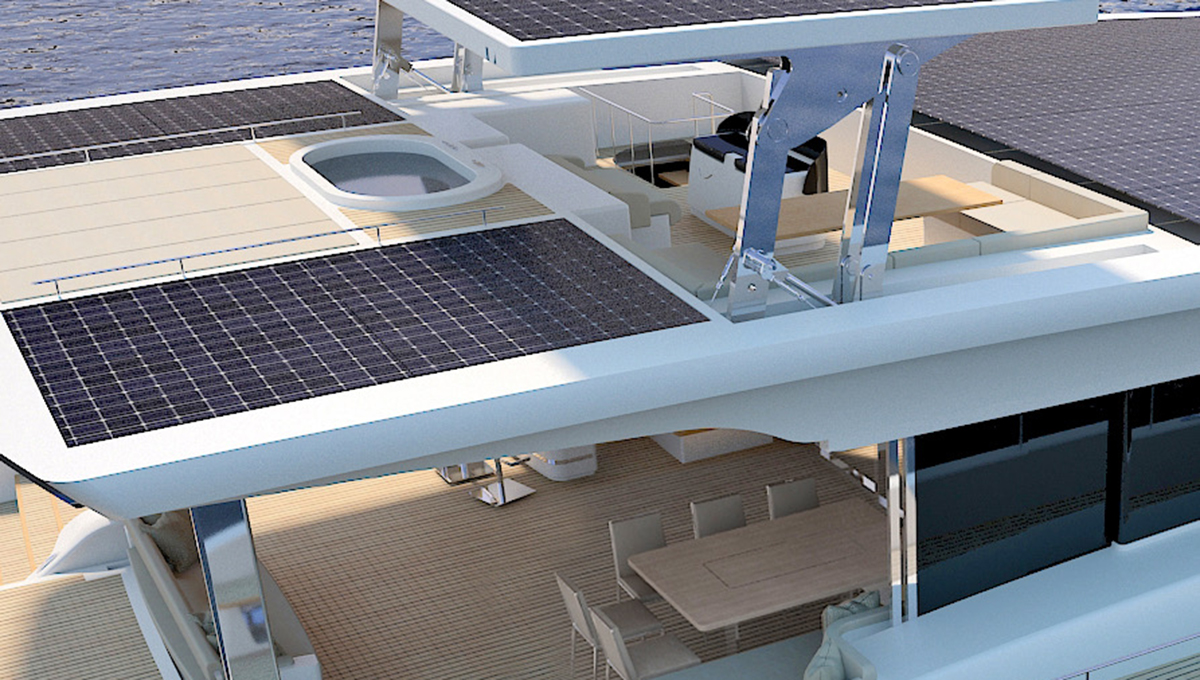
SILENT80

SILENT80
“We took what we learned from the racing scene, and implemented it into yacht design,” says co-creative director Marnix Hoekstra. “Sustainability has to be tackled as a design challenge. It’s not enough to just harness this technology and use the innovation, it needs to be beautiful as well.”
Vripack recently applied its extensive solar knowledge to the design of its 27m LeVen 90 by way of a solar-powered bimini. By designing flexible solar panels that bury the wiring out of sight, the LeVen 90’s solar roof sports a sleek, black finish that pairs function with form. But when it comes to building an entirely fossil-free superyacht that incorporates solar energy, Vripack’s Project Zero may be just the ticket.
Commissioned by the owners of a 55m sailing yacht who want to avoid the 50,000 litres of diesel it still takes to run their vessel each year, 62m Project Zero will rely solely on solar, wind and hydro. Still in the design stage, it currently holds the battery equivalent of 88 Tesla cars, of which solar power currently accounts for 15%.
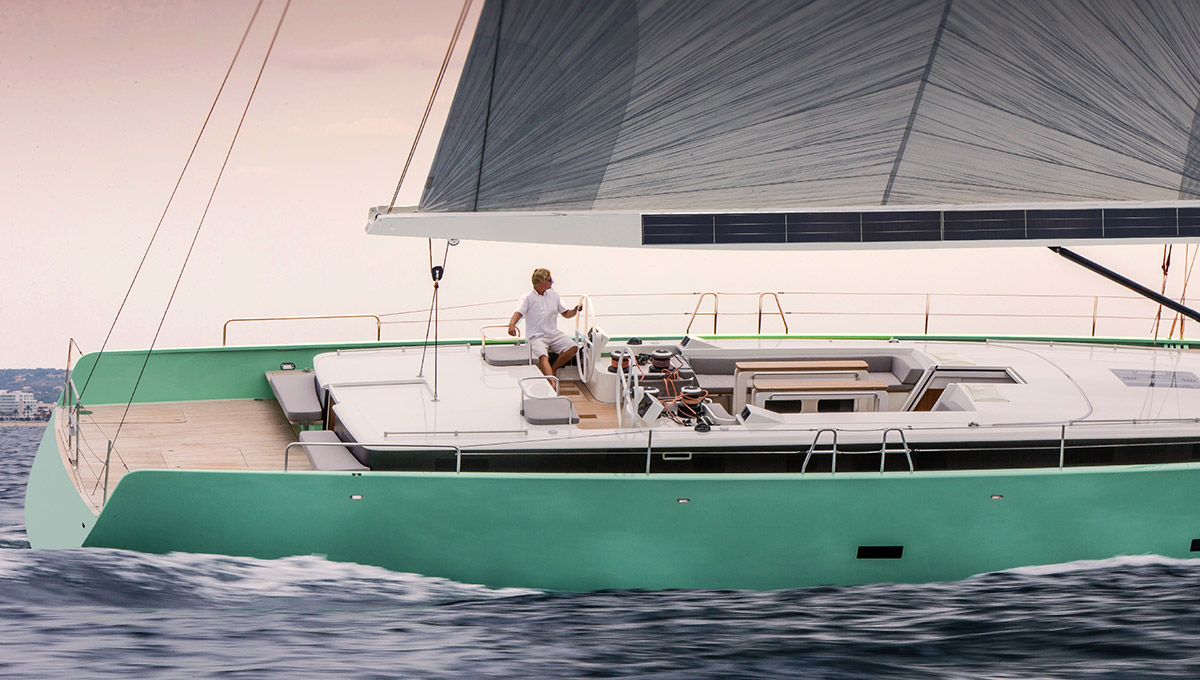
Solar cloth

Solar cloth
“Solar is not a huge amount of the yacht’s energy source, but it’s never going to be massive because of the efficiency of solar panels,” explains Hoekstra. “Whereas a diesel engine provides 40% efficiency, the solar panels that we’re using provide 25% efficiency, which means 75% of the available energy is lost. That’s still significantly better than the more common type of solar panel found on buildings, though.”
Using their existing sailing yacht as a floating testbed with all data set to be released in an open-source format, Project Zero’s design currently incorporates eight marine-grade solar panels at a total cost of 30,000 euros. It also uses a solar meter (pyranometer) to measure the direction of the sun compared to the direction of the boat, explains Hoekstra. “This means that the engineers can use live data to accurately calculate how much energy 100sqm of solar panels delivers. So, the design of Project Zero will be based on accurate, proven data rather than estimations and projections.”
Each year the entire yachting industry has an opportunity to learn about the latest in renewable energy at the annual Solar & Energy Boat Challenge. Taking place in Monaco Bay, it is open to international engineering students and professionals. Current examples of solar technologies in development at leading shipyards include an innovative solar paint that can be used on a yacht’s hull, and solar glass windows that contain small solar panels installed along the edges. But in terms of patented and proven formulas, the photovoltaic textiles developed by Solar Cloth System offer something completely different.
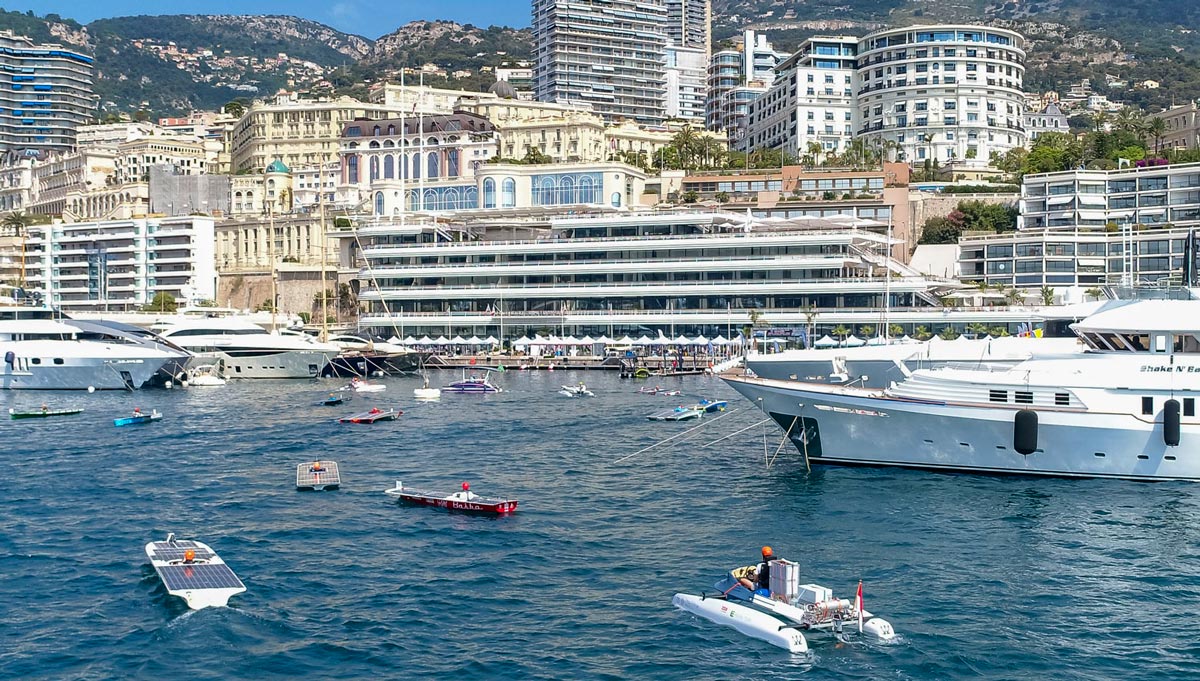
Solar & Energy Boat Challenge Monaco. Photo: Studio Borlenghi

Solar & Energy Boat Challenge Monaco. Photo: Studio Borlenghi
As thin as banknotes and flexible enough to wrap around a pencil, the result is a lightweight, highly-resistant solar cloth suitable for sun awnings, biminis and even sails. Showcased in both the America’s Cup and the Vendée Globe, it is a true evolution of rigid solar panels.
“We use silicon in place of glass or crystal, and second-generation solar technology,” explains Alain Janet, president of Solar Cloth System. “What makes us really special is our power to weight ratio of 340 watts per kilo. That’s the best there is on the planet today, bar satellites.”
Unlimited in size and with the potential for customisation, the sky is the limit for solar.

